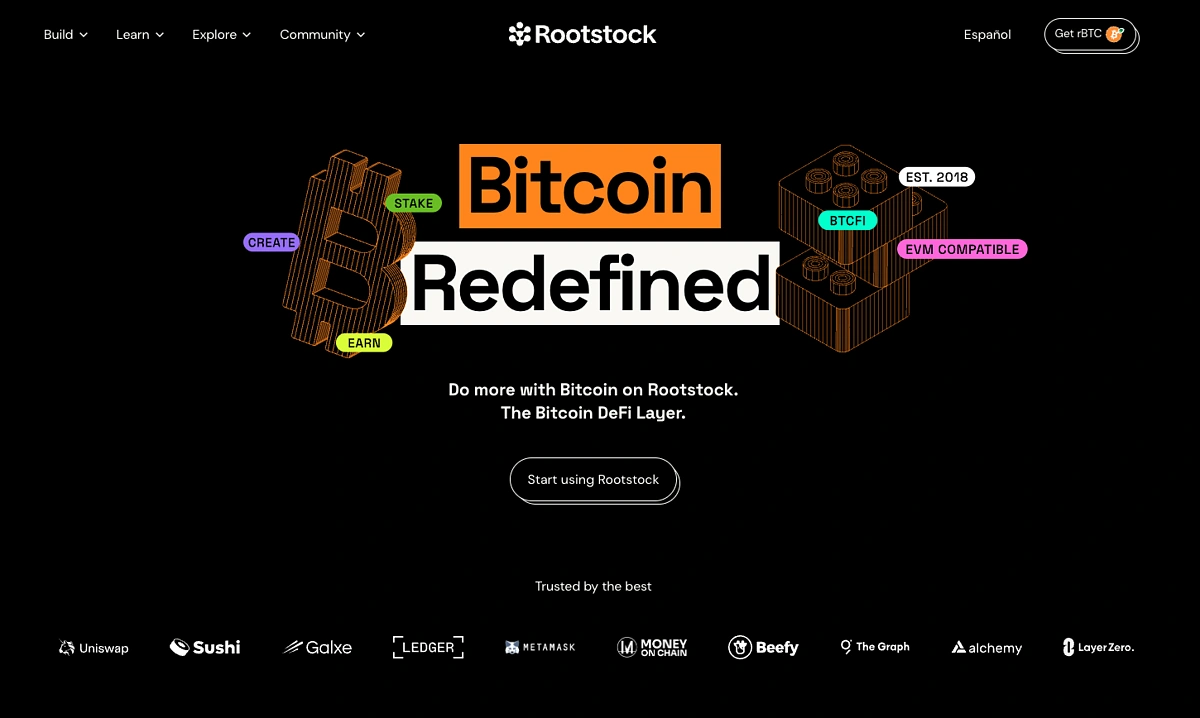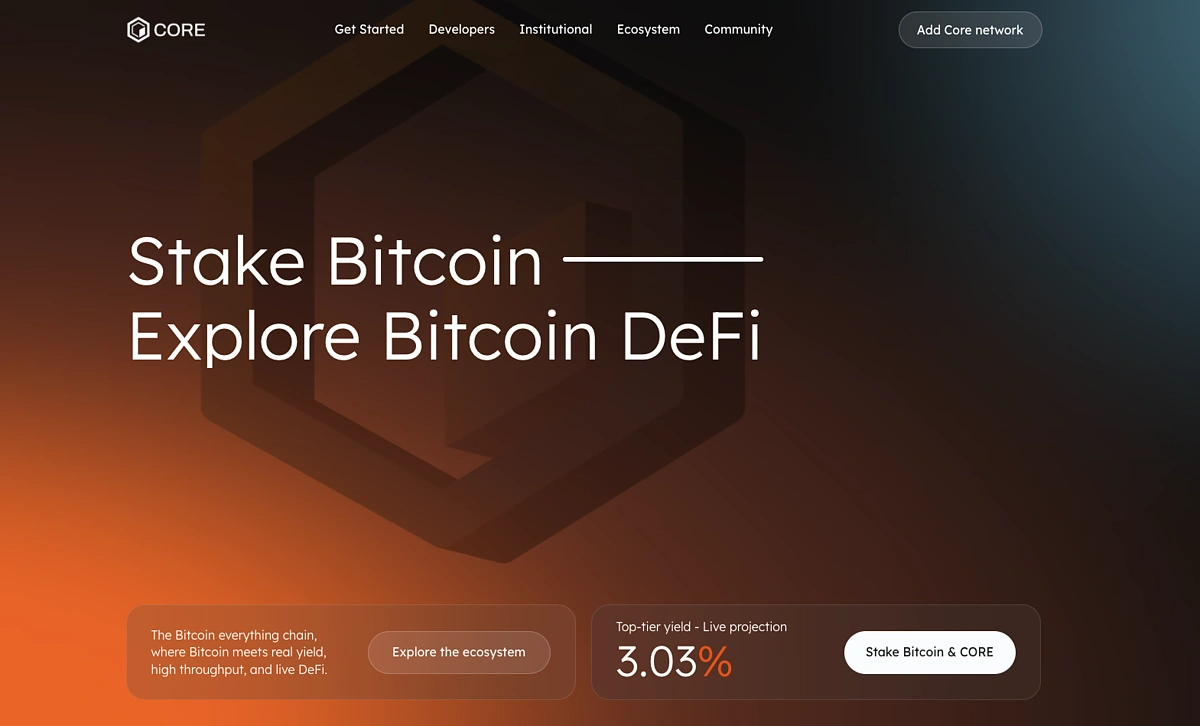What Are Bitcoin Sidechains?
Bitcoin sidechains are independent blockchains that run alongside the Bitcoin mainnet, enabling smart contracts, faster settlement, DeFi applications, and more.
Key Takeaways
-
Sidechains add features like smart contracts to Bitcoin without changing the core protocol.
-
They are independent blockchains linked to Bitcoin via a “two-way peg,” which lets users transfer BTC between the chains.
-
They have their own security models, which is the main difference from Layer 2 chains.
-
Sidechains also help Bitcoin scale by offloading transactions.

The Challenge: Scaling Bitcoin
When Bitcoin was introduced in 2008 by Satoshi Nakamoto, it became the pioneer for blockchain technology and decentralized transactions. The concept for Bitcoin was simple and straightforward: mine coins, transfer coins, and validate transactions. For a simple process like that, the programming language was also kept simple.
But as adoption grew, so did the demand for more capabilities. Early attempts to expand Bitcoin’s use case included projects like Mastercoin, a “meta-layer” solution that introduced concepts such as pegged assets which laid the foundation for stablecoins. Despite its innovations, poor messaging and slow adoption led to an eventual rebrand to Omni Layer.
Then Ethereum entered the scene in 2015. With a flexible environment and a powerful smart contract system, it captured the imagination of developers and shifted attention away from Bitcoin. Projects began popping up with the intention of expanding decentralized finance (DeFi) platforms and utility. As a result, Bitcoin was put on the backburner and attempts to expand began to dwindle.
Then came Bitcoin Ordinals.
Bitcoin Ordinals are digital artifacts similar to non-fungible tokens (NFTs). Each satoshi receives a unique serial number when mined, and additional data can be inscribed onto it using the Ordinals protocol. This process ensures that each satoshi is unique, scarce, trackable, and can be traded. It also showcased Bitcoin’s potential for more than just payments.
The Ordinals experiment reignited interest in building on Bitcoin and encouraged users and developers alike to change their perspective on Bitcoin’s possibilities. Developers began to reimagine what was possible and sidechains stepped back into the spotlight.
What Are Sidechains?
Sidechains are independent blockchains that run in parallel with the Bitcoin mainnet. Despite being connected to the main chain, they have their own consensus mechanisms, native tokens, and governance structures. A two-way peg acts like a bridge, letting users move bitcoin (BTC) to and from the sidechain without actually transferring the original asset.
In essence, sidechains are like sandboxes for innovation and allow developers to test and deploy new features without risking the integrity of Bitcoin itself.
How Sidechains Work
Sidechains operate through a “parent-child” relationship between the main network (parent) and the sidechain (child). The child network relies on the parent chain and derives its assets from it. However, the two blockchains are still able to operate independently.
For Bitcoin in particular, sidechains work by a two-way peg that works similarly to a bridge. It allows the movement of assets to and from the parent chain but doesn’t actually move the assets. Instead, smart contracts are used on both sides to ensure the locking and unlocking of corresponding coins to transfer value.
Here’s how it works:
-
A user locks BTC on the Bitcoin mainnet.
-
An equivalent amount of a pegged token (like RBTC or L-BTC) is created on the sidechain.
-
The user can transact with these tokens on the sidechain.
-
To move assets back to BTC, the sidechain tokens are destroyed, unlocking the original BTC on the mainnet.
What Is the Two-Way Peg
The two-way peg concept was introduced in a 2014 paper by Adam Back and several other authors, outlining how pegged sidechains could extend Bitcoin’s functionality. The goal was simple: enable the movement of assets between blockchains without compromising Bitcoin’s monetary base.
To contrast, one-way pegs involve burning BTC by sending the tokens to an unspendable address in exchange for another token. This process is irreversible and the BTC can never be retrieved.
On the other hand, two-way pegs temporarily lock BTC in boxes that are controlled by a bitcoin script. For each box that a user locks away, they will receive newly created tokens on the sidechain. Once done with the tokens, they can then destroy them by sending them to an unspendable address. Users can then reclaim their BTC by providing cryptographic proof of destroying the sidechain token.
This concept maintains the value link between chains because anyone can easily transfer tokens between one and the other at any time.
The Role of Federations
Some sidechains use a federation to manage key functions like validating transactions, controlling bridges, and securing locked funds. These federated models rely on trusted participants which are typically exchanges, institutions, or developers to sign transactions and ensure the network runs smoothly.
While federations improve speed and reduce costs, they also introduce some centralization. It’s a trade-off that allows for more features and faster block times but at the expense of Bitcoin’s pure trustless model.
Difference Between Sidechains and Layer 2s
Though often used interchangeably, sidechains and Layer 2 (L2) solutions are different. The two differ from each other in a few ways.
-
Security: L2s inherit the security of the main blockchain since they rely on the mainnet’s consensus and security framework. Sidechains have their own independent security model alongside their own consensus mechanisms and validator sets.
-
Interoperability and Data Availability: L2s seamlessly integrate to execute faster transaction finality with the mainnet and often store data on-chain for availability. Meanwhile, sidechains rely on bridges for asset transfers and may store data off-chain which can potentially impact data availability.
-
Integration: L2s are built on top of the main chain to scale operations by handling transactions off-chain or in batches before settling results back on the main chain. Sidechains are separate blockchains running in parallel to the main chain and operate independently with their own rules and consensus.
-
Use Cases: The primary focus of L2s is on scaling and performance improvement of the main chain while sidechains can offer more space for experimentation, custom features, or interoperability with other blockchains.
Why Bitcoin Needs Sidechains
Renowned software developer and early Bitcoin adopter, Hal Finney, once said that, “Bitcoin itself cannot scale to have every single financial transaction in the world be broadcast to everyone and included in the blockchain. There needs to be a secondary level of payment systems which is lighter weight and more efficient.”
Sidechains answer that call. They help offload traffic from the mainnet while enabling features that Bitcoin doesn’t support natively like smart contracts, decentralized finance, and tokenization. For developers and power users, they unlock Bitcoin’s potential as a programmable money platform.
What Can Be Built on Bitcoin Sidechains
The possibilities are vast for developers looking to use sidechains to tap into new possibilities for Bitcoin.
-
DeFi: Developers can build DeFi protocols that enable users to trade, borrow, lend, and stake using BTC as collateral.
-
Smart Contracts: Support for Ethereum-compatible smart contracts lets developers apply complex logic for financial products, automation, and dApps.
-
NFTs: Sidechains can allow for minting, ownership, and trading of NFTs.
-
Asset Tokenization: Platforms for tokenization of assets like securities and physical goods can be built with sidechains.
-
Faster Transactions: Many sidechains can provide better privacy features and quicker transaction finality.
-
New Use Cases: Sidechains can also be used to build applications such as gaming, social media, and more.
Advantages of Bitcoin Sidechains
Bitcoin sidechains come with a list of advantages for developers.
-
New Use Cases: Sidechains can help add features not natively available on Bitcoin including smart contracts, DeFi, NFTs, and tokenization of assets.
-
Scalability: Offloading traffic to sidechains helps reduce congestion and lower transaction fees. Some sidechains also settle transactions in seconds or minutes.
-
Flexibility: Developers can experiment with novel consensus models, privacy enhancements, and network upgrades without risking the main chain.
-
Interoperability: Ethereum virtual machine (EVM) and cross-chain bridges extend Bitcoin’s reach into the broader blockchain ecosystems.
Challenges Facing Bitcoin Sidechains
Unfortunately, implementing Bitcoin sidechains is not without its challenges.
-
Weaker Security Guarantees: Since sidechains do not inherit Bitcoin’s security, they rely on federations, bridges, or alternative consensus models that could introduce new vulnerabilities.
-
Peg Complexity and Risks: Two-way pegs require robust technical implementation and honest federation members. Without these, funds could be compromised.
-
Fragmented Ecosystem: Too many competing sidechains offering different features can dilute resources. Attention can become fragmented and potentially weaken the collective network’s effects.
-
Reduced Censorship Resistance: The partial centralization of federated sidechains make them more vulnerable to censorship, regulation, or interference.
Examples of Bitcoin Sidechains
Now, let’s look at some examples of Bitcoin sidechains.
Rootstock

Rootstock is a Bitcoin sidechain launched in 2018 by Rootstock Labs that brings Ethereum-style smart contract functionality to Bitcoin, allowing developers to build dApps and DeFi protocols within the Bitcoin ecosystem. It uses a two-way peg to convert BTC into Rootstock Bitcoin (RBTC) and supports EVM compatibility through its own Rootstock Virtual Machine (RVM), allowing developers to use the same code, tools, and libraries as builders on Ethereum.
The implementation of DECOR+ and FastBlock 5 protocols enable Rootstock to operate at a 30-second average block time, offering faster transactions for a growing DeFi ecosystem. Rootstock also runs merge mining to mine on Rootstock in the same way that mining bitcoin works. This way miners can earn additional revenue streams while securing the Rootstock chain.
The Bitcoin sidechain was co-founded by Diego Gutierrez, Sergio Demian Lerner, and Adrian Eidelman who currently hold the roles of Chairman, Chief Scientist, and Product Director respectively at Rootstock Labs.
Liquid Network

The Liquid Network was developed by Adam Back, Andrew Poelstra, and other cypherpunks at Blockstream back in 2014 although the mainnet only went live in 2018. The Bitcoin sidechain is designed to offer faster, more private transactions and support tokenized assets like stablecoins and digital securities. Built on the Elements platform, it uses a two-way peg to issue Liquid Bitcoin (LBTC) from BTC and features one-minute block times for quicker settlement.
Liquid incorporates confidential transactions to hide each user’s amounts and asset types, enhancing privacy beyond Bitcoin’s public ledger. Governed by a federation of over 60 members, including exchanges and financial institutions, it trades full decentralization for improved reliability and speed. With broad asset support and seamless integration across wallets and platforms, Liquid serves institutional needs for efficient, private, and secure blockchain-based financial operations.
Core

Core is a Bitcoin sidechain led by Core DAO and figures like Brendon Sedo and CJ Reim. It launched in January 2023 and brings Ethereum-compatible smart contracts, DeFi, and scalable dApps to the Bitcoin ecosystem. Core supports fast, low-cost transactions, decentralized governance, and even introduced self-custodial Bitcoin staking, allowing users to earn yield without losing control of their BTC.
It features the unique “Satoshi Plus” consensus, which combines Delegated Proof‑of‑Work (DPoW), Delegated Proof‑of‑Stake (DPoS), and self‑custodial Bitcoin staking to secure the network. Bitcoin miners, CORE token holders, and Bitcoin stakers delegate resources to validators, whose ranking by a daily “hybrid score” determines the top 31. Relayers sync data between Bitcoin and Core, while Verifiers watch for malicious behavior and trigger slashing when necessary. Block rewards are distributed at the end of each 24‑hour round, and validator status is checked every 200 blocks to maintain consistent throughput
Conclusion
Bitcoin sidechains are redefining what is possible in the world’s most secure blockchain ecosystem. They offer a dynamic way to scale, innovate, and expand Bitcoin’s functionality without compromising its protocol. Sidechains are bringing new life to Bitcoin and as adoption grows and technical frameworks mature, they may prove to be Bitcoin’s most important evolution yet.
This article is only for informational and educational purposes and should not be taken as financial advice. Always do your own research before investing in any cryptocurrency.
